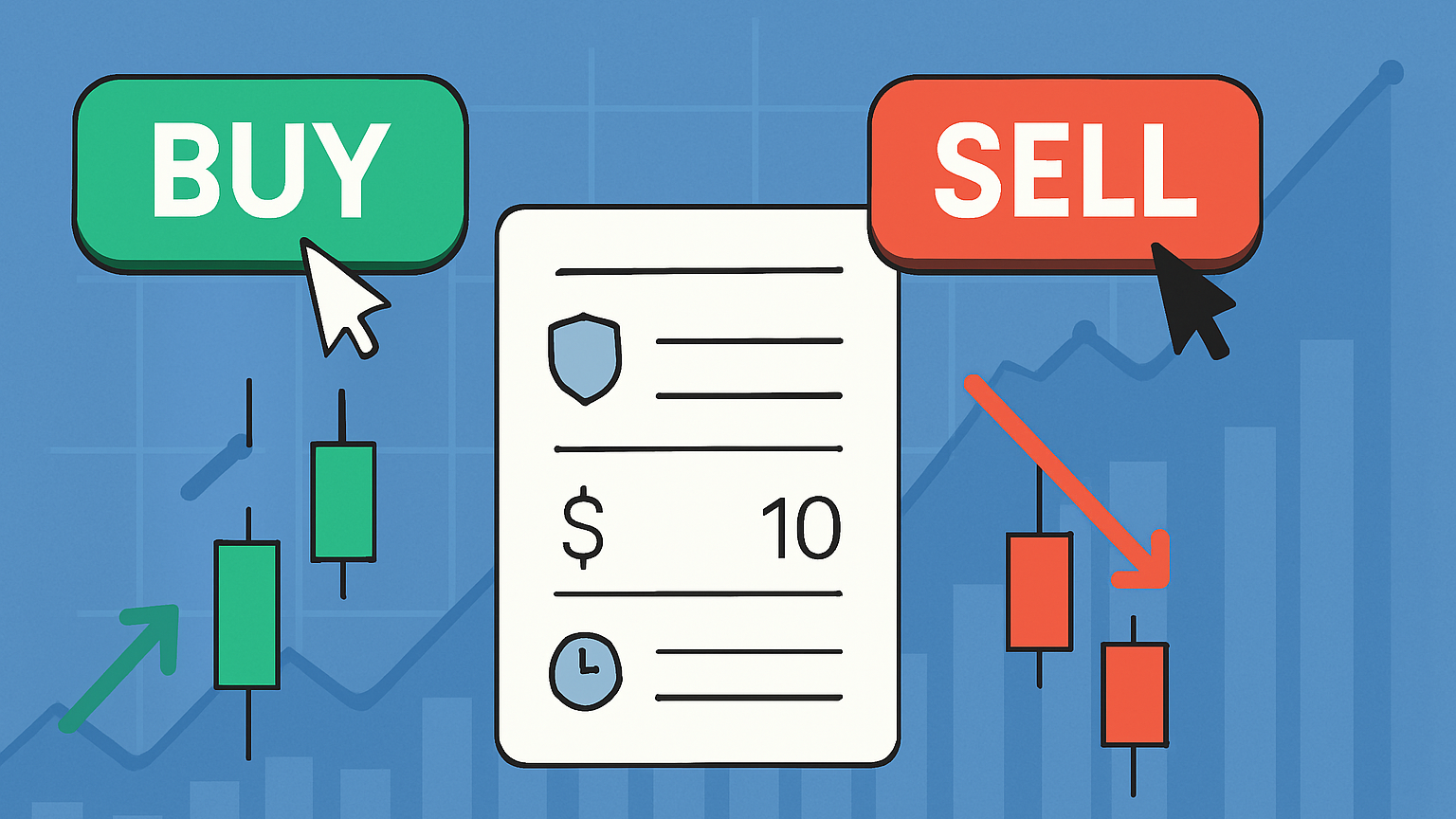Explore how ensemble learning enhances trading accuracy by combining multiple models for better chart pattern detection and risk management.
Want to improve your trading accuracy and reduce false signals? Ensemble learning combines multiple machine learning models to detect chart patterns more reliably and adapt to changing market conditions. Here's what you need to know:
- What is Ensemble Learning? A method that blends predictions from various models to improve accuracy and reduce errors.
- Why use it? It cuts false positives by 30%, adapts to market changes, and provides better risk management capabilities.
- Key Techniques: Bagging (e.g., Random Forests), Boosting (e.g., XGBoost), and Stacking for combining insights from different models.
- Benefits for Traders: Boosts pattern recognition accuracy by 18%, reduces portfolio drawdowns by 22%, and handles complex market data effectively.
Quick Tip: Many advanced trading platforms offer sophisticated pattern recognition and AI backtesting capabilities to simplify the implementation of ensemble strategies.
Keep reading to learn how ensemble learning works, its practical applications in trading, and how to get started effectively.
Ensemble Models for Chart Pattern Detection
Random Forests, Gradient Boosting, and Stacked Ensembles are widely used for identifying complex chart patterns in financial markets. These models apply techniques like bagging, boosting, and stacking, tailored specifically for market analysis.
Random Forests in Chart Analysis
Random Forests are particularly effective at cutting through market noise to identify genuine chart patterns. In equity trading scenarios, they achieved an impressive 89% accuracy in recognizing patterns, even during volatile market conditions.
Here are some standout features of Random Forests:
| Feature | Advantage |
|---|---|
| Noise Resistance | Filters out false signals through ensemble voting |
| Feature Importance | Highlights the most impactful chart indicators |
| Overfitting Control | Maintains performance on unseen market data |
While Random Forests shine in pattern validation, Gradient Boosting models are better suited for predicting trends by correcting errors step by step.
Gradient Boosting for Trend Prediction
Algorithms like XGBoost and LightGBM have set new standards for trend prediction in financial markets. By focusing on past mistakes, these models excel at identifying trend reversals and continuation patterns.
For example, XGBoost reduced prediction errors by 23.7% compared to ARIMA models in controlled tests, showcasing its effectiveness in practical trading scenarios.
To further refine signal accuracy, traders often combine these models using stacked ensembles.
Stacked Ensembles for Signal Detection
Stacked Ensembles bring together the strengths of multiple models to improve prediction accuracy. Research by Weng et al. (2018) showed that this approach enhanced stock price prediction accuracy by 5.2% over standalone models [1].
Traders typically build Stacked Ensembles by combining:
- Base models like Random Forests and Gradient Boosting
- Technical indicators as input features
- A meta-model to synthesize final predictions
This multi-layered structure allows for the detection of patterns across different timeframes, which individual models often miss.
Using Ensemble Learning in Trading
When it comes to trading, preparing your data is the first key step for making ensemble learning work effectively. Traders should collect OHLCV (Open, High, Low, Close, Volume) data along with volume details. After gathering the data, it needs thorough preprocessing to ensure the models deliver accurate predictions.
Data Preparation for Ensemble Models
To get the most out of ensemble learning, you'll need a well-structured data pipeline. Here's a breakdown of the essential steps:
| Step | Details |
|---|---|
| Feature Engineering | Create technical indicators, candlestick patterns, and price action features. |
| Normalization | Scale your features to a 0-1 range for consistent processing by models. |
| Time Series Handling | Use chronological splits and rolling validation for time-based data. |
Training and Optimizing Ensemble Models
Training ensemble models is all about fine-tuning and validation. Here are some key strategies to focus on:
- Hyperparameter Tuning: Use Bayesian optimization to adjust parameters like the number of estimators, tree depth, and learning rates.
- Cross-validation: Apply time series-specific validation methods to account for the sequential nature of trading data.
- Feature Selection: Review importance scores to pinpoint which indicators are the most predictive.
Evaluating Model Accuracy for Chart Patterns
To measure how well your model performs, combine standard machine learning metrics with trading-specific evaluations. Advanced AI backtesting assistants can be a powerful resource for this process, offering detailed performance visualizations that help traders validate their models across different timeframes and market scenarios.
To keep your models reliable, schedule regular retraining and monitor for concept drift. This ensures your model stays effective even as market conditions change, maintaining its ability to recognize chart patterns accurately.
Advanced Uses of Ensemble Learning in Trading
Ensemble learning can take trading strategies to the next level by improving pattern recognition and refining risk management. Here’s a closer look at how combining multiple models can lead to smarter trading decisions.
Merging Technical Indicators with Ensembles
By combining traditional trading signals with advanced pattern recognition, traders can achieve more accurate predictions and reduce errors.
| Integration Method | Purpose & Impact |
|---|---|
| Feature Engineering | Combines indicators and prices, boosting accuracy by 10-15%. |
| Multi-indicator Consensus | Cuts false positives by 40% through cross-validation. |
| Adaptive Weighting | Adjusts to market changes, improving prediction accuracy by 8%. |
These methods go beyond basic ensemble techniques, incorporating time-based and risk-aware strategies to refine outcomes.
Ensemble Approaches for Time Series Data
Financial time series data demands specialized methods to capture shifting market trends. Multi-resolution ensembles, which combine data from different timeframes (daily, weekly, monthly), outperform single models by 8% in market prediction accuracy.
Other key strategies include:
- Temporal stacking: Linking historical data periods for better predictions.
- Self-adjusting ensembles: Adapting to market regimes to maintain performance.
These approaches allow traders to handle the complexities of time-sensitive financial data more effectively.
Leveraging Ensemble Uncertainty for Risk Management
Uncertainty measures add a new layer to risk management by integrating confidence levels into trading decisions. For instance, using uncertainty-based metrics has been shown to reduce drawdowns by 20%.
Key applications include:
- Position sizing: Adjusting trade sizes based on risk, reducing drawdowns.
- Stop-loss optimization: Fine-tuning exit points to protect profits.
- Confidence-driven portfolio allocation: Allocating assets based on model certainty.
Adaptive ensembles also detect and respond to market shifts automatically, ensuring consistent performance through changing conditions. These methods pave the way for practical applications, which will be explored in upcoming case studies.
Practical Examples and Tools for Ensemble Learning in Trading
Case Studies: Trading with Ensemble Learning
Forex traders applying techniques like Random Forest, Gradient Boosting, and Neural Networks reported a 62% win rate when trading EUR/USD, according to Chen et al. (2019). Similarly, a crypto-focused hedge fund utilized SVM-based Bitcoin pattern detection, achieving 22% annual returns in 2022. These examples highlight how ensemble methods can deliver measurable results in financial markets.
Portfolio Optimization Using Ensemble Models
Ensemble learning has proven to outperform traditional methods in portfolio management. Research from J.P. Morgan Asset Management demonstrated that portfolios built with ensemble models reduced drawdowns by 15-20% while maintaining comparable returns.
| Component | Impact | Focus |
|---|---|---|
| Model Diversity | -20% drawdown | Combining algorithms |
These findings align with the capabilities of advanced AI backtesting assistants, which support optimization techniques for enhanced portfolio performance.
Advanced Chart Analysis Capabilities
Modern trading platforms offer advanced chart analysis and pattern recognition features that support the development and refinement of ensemble models. These tools help traders integrate multiple signals to build more robust trading strategies.
Conclusion and Key Points
How Ensemble Learning Helps Traders
Ensemble learning has reshaped how traders recognize chart patterns by offering capabilities that are both more accurate and dependable. By blending multiple models, it establishes a stronger framework for detecting patterns and analyzing markets.
| Advantage | Improvement | How It Works |
|---|---|---|
| Better Accuracy | +18% in pattern recognition | Combines multiple models |
| Lower Risk | -22% in portfolio drawdown | Detects volatility more effectively |
| Adapts to Markets | Learns continuously | Uses adaptive weighting |
| Handles Complexity | Spots intricate patterns | Merges multiple indicators |
How to Get Started with Ensemble Learning
To take advantage of these benefits, a clear and organized approach is essential.
"Ensemble methods combine multiple models, offsetting individual biases and reducing overfitting, thus making predictions more robust against the unpredictable nature of financial markets." - PyFi, Financial Machine Learning Blog, 2023 [2]
Here’s how you can implement ensemble learning:
- Focus on Quality Data: Use OHLCV datasets enriched with technical indicators.
- Diversify Your Models: Include a mix of algorithms like Random Forests and Gradient Boosting.
- Validate Thoroughly: Apply rigorous cross-validation to avoid overfitting, as seen in portfolio optimization studies.
- Track Performance: Continuously monitor how your models perform.
These steps align with the validation techniques outlined earlier, ensuring your ensemble models deliver consistent results.
FAQs
How does machine learning recognize patterns?
Machine learning identifies patterns through a step-by-step process:
- Data Processing: Historical data is cleaned, normalized, and key features like price movements and volume changes are extracted.
- Pattern Learning: Mathematical patterns are defined, and models are trained using labeled examples.
- Detection: Trained models are applied to new data to identify patterns.
- Validation: Additional criteria are used to filter and confirm the patterns detected.
What is the goal of using ensemble models rather than individual models?
Ensemble models aim to deliver better results by combining the strengths of multiple models. This approach improves performance metrics that traders often monitor, such as accuracy and reliability:
| Benefit | Trading Impact |
|---|---|
| Improved Accuracy | More precise pattern detection |
| Reduced Overfitting | More dependable signals |
| Consistent Performance | Adaptability to market changes |
| Enhanced Risk Management | Better position sizing |
Ensemble models stand out because they:
- Combine diverse views on market behavior.
- Minimize biases from individual models.
- Deliver stronger predictions across various market scenarios.
- Provide built-in uncertainty assessments for managing risks.






